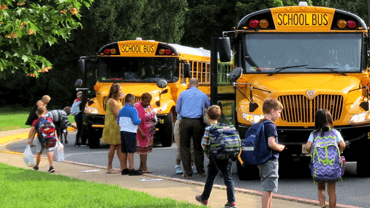 Blog
Blog
Managing Risks in the Collaborative Learning Environment
The trend toward more collaborative learning environments incorporates a variety of concepts into school classrooms to facilitate greater creativity and flexibility. “Flexible Seating” is quickly becoming increasingly popular within the K-12 environment. This new approach, also known as the 21st Century classroom, is intended to create a student-centered classroom that better stimulates and supports learning. You may be exploring approaches including student seating with more mobility, movable storage and partitioning, and relaxed, more informal seating areas.
The 21st Century classroom shows potential for educational benefits, but before implementing these measures, pay careful attention to safety considerations and risk management. This approach may involve the following components for configuring the classroom:
- Movable storage walls to create learning centers or classrooms within classrooms
- Specially-shaped desks and chairs on wheels that can create pods, tables, circles, or individual seating arrangements
- More open areas with rugs
- Relaxed seating such as bean bags
- Informal gathering areas
- Alternative seating options that allow individuals movement while staying seated
On one level, there are basic physical safety and cleanliness concerns. Assess furniture for stability, potential as trip and fall hazards, fire risk and probability for misuse. Furniture materials must be easily cleaned and resistant to pest infestation. Upholstered seating creates significant challenges to routine cleaning and hygienic maintenance. Rolling storage units require careful loading and conscientious handling so that they will not tip over easily or cause injury when moved. Finally, the configuration of the room must never interfere with exits or prompt emergency evacuation.
Supervision is a paramount risk management area for the 21st Century classroom. Separating the room into specialized areas can result in reduced visibility. This creates the potential for inappropriate interaction between adults and students, or between students. Never configure the classroom so that while the teacher is working with a small group, there is inadequate supervision for the rest of the class. Configurations that isolate an adult and a student in a one-on-one situation must be prevented.
Teachers and staff may find classroom management and increased preparation as possible drawbacks of flexible seating alternatives. Some students can find it difficult to focus in this type of environment, which can lead to behavioral issues and inconsistent learning outcomes. Any alternatives you put in place must comply with all individualized educational plans (IEPs) in place for any students. Your instructional staff may have to deal with added clean up and set up and find there are increased maintenance needs.
Advance planning is a vital element in making the 21st Century classroom a safe environment for students and staff. Planning needs to include furniture selection that accounts for student safety, function and practicality. In addition, think about any new policies, rules and boundaries that may be required, and provide all persons involved with advance preparation.
Another trending addition to the school campus is the wellness center. Since the start of the pandemic, mental health concerns have risen throughout the state, but especially in our youth. Wellness centers offer students needing mental and/or physical health assistance a place to get that help. Many school districts are partnering with county social services, public health agencies, or non-profit organizations. Arranging and furnishing these spaces should be done with a mindfulness of the risks and hazards related to student wellbeing, particularly appropriate supervision. The room should be inaccessible to students when proper supervision is not available. When possible, utilizing single seating options is the best choice.
You may want to make any transition to these novel concepts gradually to be sure that they work for your team and their pupils before making wholesale investments into them. Evaluate and ensure students and staff comply with safety protocols and security practices before moving to the next step.
About Trina Caton
Trina Caton is Assistant Vice President in AP Keenan’s Loss Control Department and is based in our Rancho Cordova office. Trina currently directs and oversees Loss Control internal operations/resources of the department statewide. Trina has provided loss control/risk management services for AP Keenan clients since 1993. She has a thorough knowledge of occupational and environmental regulations and is dedicated to making workplaces safer.
Subscribe
Subscribe to the Keenan Blog





